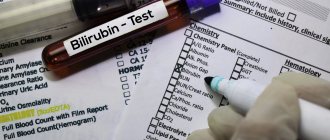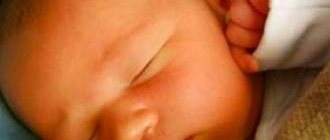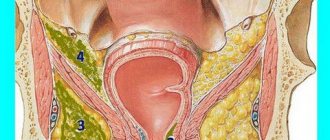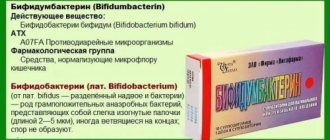Pediatrician (working with children of the first year of life)
Murzina
Oksana Yurievna
22 years of experience
Pediatrician of the highest category, member of the Union of Pediatricians of Russia
Make an appointment
Jaundice in newborns (most often physiological) is a condition in which the skin and whites of the eyes turn yellow due to high levels of a substance called bilirubin in the blood. Most babies develop 2-3 days after birth. Bilirubin is a yellow substance resulting from the destruction of hemoglobin during the natural replacement of red blood cells. Under normal conditions, it should be processed quickly in the liver. According to medical statistics, jaundice is diagnosed in 50-60% of cases in newborns born at term, and in 80% of premature infants. Bilirubin in excess amounts has a toxic effect on internal organs.
Causes of the disease in infants
Jaundice in newborns can have the following causes:
- increased breakdown of hemoglobin due to Rh conflict;
- blood type conflict between mother and baby;
- maternal and infant infections;
- birth injuries;
- hypothyroidism (decreased thyroid function);
- polycythemia (increased number of red blood cells);
- reaction to breast milk;
- congenital hepatitis;
- pyloric stenosis (congenital pathology of the stomach).
Norm of bilirubin in newborns
“An increase in the level of bilirubin in the blood is observed in almost all newborns in the first 3-4 days of life,” says Anna Levadnaya. - In approximately half of full-term and almost all premature babies, this is accompanied by discoloration of the skin in a jaundiced color. This is noticeable to the eye if the level of bilirubin in the blood is above approximately 68 µmol/l. With physiological jaundice in full-term infants, total bilirubin is less than 256 µmol/l, in premature infants it is less than 171 µmol/l. If these numbers are higher, and there are also a number of other signs, for example, earlier appearance and prolonged increase in jaundice, dark urine and discolored stool, anemia, then additional examinations are required.
If we talk about the level of bilirubin in the blood of a newborn (full-term), then we should focus on such indicators.
| Child's age | Bilirubin level in blood (µmol/l) |
| First day | up to 85 |
| 36 hours | up to 150 |
| 48 hours | up to 180 |
| 3-5 days | up to 256 |
| 6-7 day | up to 145 |
| In two weeks | up to 20.5 |
What are the symptoms in babies?
Symptoms may range from mild to severe. This depends on the level of bilirubin in the blood and the duration of the disease. The causes and consequences of jaundice in newborns can vary, but there is one common characteristic - jaundice of the skin and sclera. It is worth noting that the eyes show symptoms faster. The baby may experience increased drowsiness with a decreased sucking reflex. Convulsions may occur. Without treatment, advanced jaundice can cause deafness, mental retardation and paralysis.
Does your newborn have symptoms of jaundice?
Only a doctor can accurately diagnose the disease. Don't delay your consultation - call
What is bilirubin
All mothers have heard about newborn jaundice, which is caused by increased levels of bilirubin in the blood.
According to statistics, bilirubin increases in 50 percent of newborns (in premature babies this figure is higher - up to 80 percent of children suffer from jaundice). What is bilirubin? This is a bile pigment that is formed as a result of the breakdown of red blood cells (blood cells responsible for transporting oxygen). In a newborn baby, red blood cells begin to break down, but the liver is not yet mature and there are not enough enzymes to process the breakdown products. Plus - additional supply of indirect bilirubin from the intestines. Therefore, newborns often experience an increase in bilirubin levels and the development of jaundice. It can be physiological, when bilirubin does not increase significantly, such jaundice goes away on its own. But in some cases, pathological jaundice may develop, which requires mandatory treatment.
Main and rare types of disease
Increased bilirubin in infants is considered normal, but only in the first few days. Gradually the figures are decreasing. If this does not happen, we are talking about the development of a pathological process.
Types of jaundice in newborns (depending on the reasons for its occurrence and severity):
- physiological;
- hemolytic;
- conjugative;
- neonatal;
- nuclear;
- parenchymal;
- obstructive;
- pathological4
- mechanical.
Classification of newborn jaundice allows you to accurately diagnose and determine the direction of treatment. In uncomplicated cases, health is good. Physiological jaundice occurs in 60-70% of infants. It is also called temporary conjugation. Appears on days 3-4 (in premature infants on days 5-6) after birth without signs of anemia and hemolysis. It goes away within 7-14 days.
Conjugation jaundice develops due to the immaturity of any component of the bilirubin metabolic system. Occurs from 2 to 10 days after birth. The disease lasts from 14 to 30 days. Differential diagnosis is difficult, and symptoms may be similar to other types of jaundice. Inpatient monitoring of the young mother and baby is recommended.
Hemolytic jaundice in newborns occurs due to a history of other diseases. These may be: pulmonary infarction, liver damage, septic endocarditis, malignant tumors, malaria. Toxic effects on the body can also cause the development of this form of the disease. Diagnostics shows an increased level of stercobilin in feces and the presence of hyperbilirubinemia.
Neonatal jaundice of newborns is provoked by immaturity of liver cells, increased production of bilirubin and low ability of blood serum to bind it. If a decreasing trend in indicators is not observed, diagnostics are necessary to determine the causes. Neonatal jaundice is characterized by insufficient amounts of enzymes that are needed to neutralize excess bilirubin in the blood.
A severe form of the disease is considered to be kernicterus, which affects the brain, which is not bound by bilirubin. Symptoms develop rapidly during the first two days after birth. The baby has a mask-like facial expression, convulsions, tension in the muscles of the neck and head, and wheezing when listening. This type of jaundice in newborns has serious health consequences.
Parenchymal type is a severe form of the disease that requires immediate medical attention. It is of hepatitis origin. Obstructive jaundice is a pathological syndrome, the cause of which may be disturbances in the metabolism of metals, proteins, anatomical defects and obstruction of the bile ducts. It appears from the first days of life. Recovery is possible by the second half of the year, provided the form of the disease is uncomplicated.
The obstructive (subhepatic) form of the disease develops against the background of bile duct obstruction. There may be a history of abdominal tumors. In infants, the skin color has a greenish-yellow tint, stool is whitish, and urine is dark. Pathological jaundice in the neonatal period develops rapidly - in the first days after birth. An enlargement of the spleen and liver, and the occurrence of spontaneous bruises on the body are diagnosed. Increased hemolysis may occur if there is a history of Rh factor incompatibility between mother and baby.
What tests should be taken to check bilirubin?
— The most accurate way to determine the level of bilirubin in the blood is a biochemical blood test. This is what the doctor will prescribe if he suspects the development of pathological jaundice,” says Anna Levadnaya, pediatrician, candidate of medical sciences, author of a blog on Instagram about pediatrics . — There is also a transcutaneous test - a special device that determines the approximate level of bilirubin in the blood through the skin. This test is the fastest, but very approximate, so it is used as an auxiliary test.
But in order to distinguish normal physiological jaundice from pathological, in addition to the level of total bilirubin in the blood, the doctor must take into account other factors, so additional tests may be prescribed for the newborn. For example, check the level of hemoglobin and red blood cells. With physiological jaundice, these values remain normal. The level of direct and indirect bilirubin in the blood is also taken into account. In physiological jaundice, direct bilirubin is less than 20 percent.
How does HDN occur?
Features of the course of HDN are:
- earlier (as early as 1 day) onset of jaundice;
- the ability to achieve higher (sometimes critical) bilirubin numbers;
- high intensity of skin coloring;
- the presence of other symptoms - swelling, enlargement of the liver and spleen, lethargy, refusal to eat;
- possible addition of neurological symptoms;
- presence of anemia in a blood test;
- positive Coombs test.
HDN can be either mild or quite severe. As a rule, jaundice is easier when there is blood group incompatibility, and more severe when there is incompatibility according to the Rh factor.
How to get it back to normal
With physiological jaundice, when the bilirubin level is slightly exceeded, the child feels well, no measures need to be taken to reduce it. Bilirubin levels gradually return to normal, usually by the end of the first month of life.
If we are talking about a more serious condition, when the level of bilirubin in the blood of a newborn is above 256 µmol/l, additional examinations and mandatory treatment are required.
“A modern method of reducing bilirubin is phototherapy,” says Anna Levadnaya . – Its duration and intensity depend on the child’s body weight at birth, as well as how much bilirubin levels are exceeded. In severe cases, the newborn may be given an exchange transfusion. The need for transfusion, its frequency and volume is determined by the doctor. I note that the prescription of sorbents, drugs such as phenobarbital, Essentiale, LIV-52, ultraviolet blood enrichment, electrophoresis or excessive infusion therapy for elevated bilirubin levels are ineffective, and for phenobarbital it is not safe.
Why does the “jaundice” last?
In some cases, jaundice may be more severe: with higher levels of free bilirubin and/or lasting up to 3-4 months. There are several reasons for this:
- A reduced volume of breast milk or formula, and nutritional deficiencies immediately after birth somewhat worsen and prolong the course of jaundice.
- Fully breastfeeding in the first months of life can prolong the period of jaundice and increase bilirubin levels. This condition is called breast milk jaundice.
The cause of “breast milk jaundice” is still not clear. You can talk about such jaundice if it:
- delayed longer than 1-2 months of life;
- bilirubin level remains above 170-180 µmol/l;
- there is a tendency to a slow decrease in bilirubin;
- temporary withdrawal of breastfeeding leads to a sharp decrease in blood bilirubin.
Both conditions are safe for the baby and do not require treatment. In case of breastfeeding jaundice, in rare cases, with very high blood bilirubin levels, the doctor may recommend a temporary refusal of breast milk. However, in the vast majority of cases this is not required. Neither Russian nor international clinical recommendations recommend weaning such a baby.
Can a baby with jaundice be vaccinated?
In most cases, newborn jaundice is not a contraindication for preventive vaccinations. However, the issue of vaccinating a baby with jaundice should be decided with the pediatrician who is monitoring the child.
Interpretation of child tests by pediatricians online
cost of service: 500 rubles
Order
The pediatrician will interpret the tests during an online call using the Zoom or WhatsApp application.
- detailed explanation from the pediatrician.
- an alternative opinion from a competent specialist in interpreting the analyses.
- the opportunity to ask questions to the doctor regarding test results.
Jaundice of newborns - symptoms and treatment
Symptoms of physiological jaundice
Physiological jaundice is manifested by a yellowish discoloration of the sclera and skin.
The child’s general condition does not suffer, the color of urine and feces does not change. Sometimes appetite is slightly reduced and drowsiness is increased. The content of bilirubin in the blood is increased. The normal level of bilirubin in umbilical cord blood serum is 26–34 µmol/L. In the first days of life, its concentration increases at a rate of 1.7–3.4 µmol/l/hour.
If bilirubin levels rise faster, the skin begins to turn yellow. Moreover, in full-term newborns, jaundice appears at a bilirubin level of about 60 (70)–85 µmol/l, and in premature newborns - within 95 (100)–110 µmol/l.
Yellowness of the skin lasts for approximately two to three weeks, then gradually becomes less intense. In premature babies it may be present for up to a month or longer. The general condition of the child does not suffer.
Physiological jaundice of newborns is not contagious and, as a rule, passes without outside intervention; the child does not need any treatment.
A more intense increase in the level of bilirubin is facilitated by fasting, hypothermia of the child, as well as later (later than 24 hours) the passage of meconium - original feces. Therefore, the best prevention and treatment of physiological jaundice in newborns is early and frequent breastfeeding. Colostrum, or "early milk" during the first few days, acts as a laxative, helping to release bilirubin from the body.
Breast milk jaundice, a type of physiological jaundice, occurs very rarely, appears only at the end of the first week of the baby’s life, and in some cases can last 1-3 months.
Breast milk jaundice peaks between 10 and 21 days of a baby’s life, and direct bilirubin levels can reach 300–500 µmol/L. After the third week it usually starts to decline. The child does not have any toxic manifestations or pathological symptoms. Typically, breastfeeding jaundice goes away completely by the third month of life.
Symptoms of pathological jaundice
Hemolytic disease of the newborn (HDN) is often accompanied by neonatal jaundice. This pathology occurs due to Rh incompatibility or due to a blood group conflict. Moreover, HDN associated with Rh incompatibility is usually more severe than with a blood group conflict.
Jaundice due to HDN can appear at birth or develop in the first day of a child’s life. Accompanied by an enlargement of the liver and spleen, the skin becomes pale. In severe cases, amniotic fluid, vernix lubrication and umbilical cord membranes turn yellow.
In case of a blood group conflict, the skin turns yellow on the second day, but the intensity of the color quickly increases by the 3-4th day of the child’s life.
Most often, HDN is combined with jaundice and anemia. In more severe forms of the disease, icteric syndrome is combined with dropsy. Children are often stillborn or die soon after birth.
Symptoms of severe HDN:
- severe pallor of the skin with an icteric tint;
- general swelling;
- accumulation of fluid in the abdominal cavity (ascites);
- enlarged liver and spleen;
- disorders of the cardiovascular and respiratory systems;
- increased bleeding of blood vessels;
- severe anemia, decreased protein and increased bilirubin are detected in the blood.
The severity of hemolytic disease is determined by the severity of its symptoms at birth and the rate of their increase in the subsequent hours of the child’s life. The severity of HDN is determined by the degree of prematurity of the child, which determines the risk of complications and further prognosis.
Jaundice of newborns due to intrauterine infections. Intrauterine infections are almost always accompanied by icteric syndrome. It can appear either immediately at birth or within 28 days of the child’s life. The severity of jaundice correlates with the severity of the disease.
With intrauterine infections, along with jaundice, the following are often observed:
- increased body temperature;
- poor weight gain;
- child's anxiety;
- enlarged liver and spleen;
- regurgitation, vomiting, stool disorders;
- skin rashes;
- congenital malformations.
Jaundice in neonatal sepsis. Thanks to modern antibiotics, sepsis in newborns is rare, but most often with icteric syndrome. The condition is always serious: the body temperature is often elevated, the cardiovascular, nervous, respiratory and other systems suffer. Bilirubin levels are rarely critical (more than 300–320 mmol/l), so replacement blood transfusion is usually not required.
Jaundice due to malformations of the biliary tract. When the bile ducts are fused or completely absent, jaundice appears immediately after birth and progresses rapidly. In a child, bile does not enter the intestines, which is why the stool becomes an unusual light color and the urine darkens. Obstructive jaundice develops, and the child’s general condition suffers significantly.
Crigler-Nayjar syndrome . In the first type of syndrome, the enzyme necessary to bind bilirubin with glucuronic acid (glucuronyltransferase) is completely absent. Jaundice appears on days 1–3 of life and increases progressively. The concentration of free bilirubin in the blood exceeds 428–599 µmol/l [10]. Without treatment, newborns often die from kernicterus.
In the second type of Crigler-Nayyar syndrome, enzyme activity is reduced due to a violation of its structure. The concentration of free bilirubin in the blood rarely reaches critical levels, and the disease is milder [10].
Other types of hereditary jaundice, such as Rotor, Dabin-Johnson, are even less common; Gilbert's syndrome is often detected in adolescence.
Jaundice in Minkowski-Shoffard anemia is rare and moderately expressed. Against the background of icteric syndrome, anemia is always present, caused by the destruction of red blood cells. The skin and mucous membranes are pale due to anemia, so the icteric tint is weakly expressed. The liver and especially the spleen are significantly enlarged. In children with this disease, the temperature rises greatly, nausea and vomiting appear, bowel movements become more frequent, and a terrible symptom occurs - convulsions. At the time of hemolytic crisis, urine and feces are intensely colored.
Jaundice due to galactosemia. Symptoms of moderate to severe galactosemia in newborns may appear immediately after birth. After starting milk feeding, the child develops diarrhea and vomiting, and weight loss quickly. Subsequently, jaundice develops and the liver enlarges. Somewhat later, symptoms of damage to the nervous system appear: severe agitation, muscle cramps, eye damage in the form of cataracts (clouding of the lens), etc.
Jaundice due to hypothyroidism. Jaundice discoloration of the skin and whites of the eyes appears on the 2nd–3rd day of a child’s life and lasts 3–12 weeks. The severity of jaundice depends on dysfunction of the thyroid gland and is combined with other symptoms of the disease: high birth weight, severe edema, low timbre of voice, early and persistent constipation. The level of bilirubin in the blood is increased, unbound bilirubin predominates in a concentration of 51–204 µmol/l [10].









